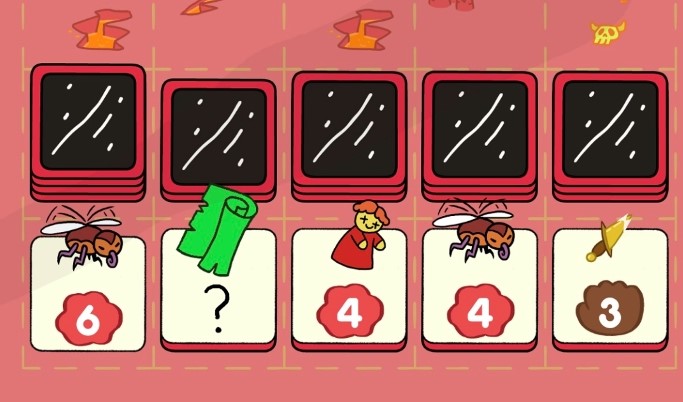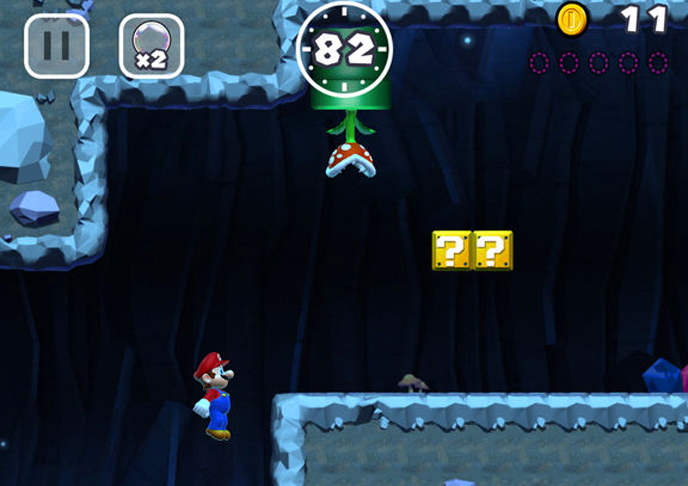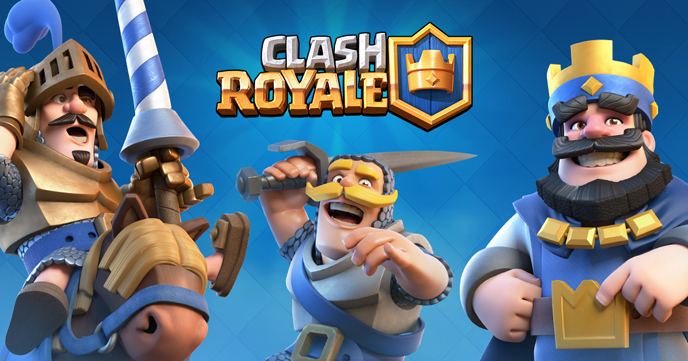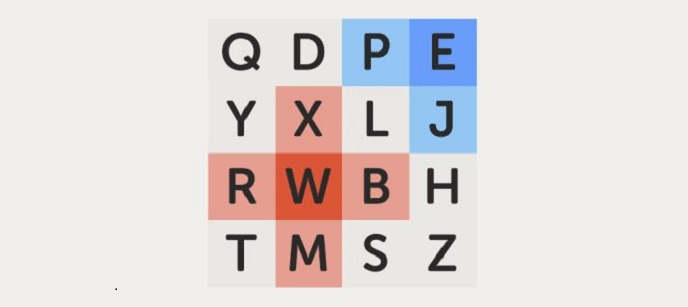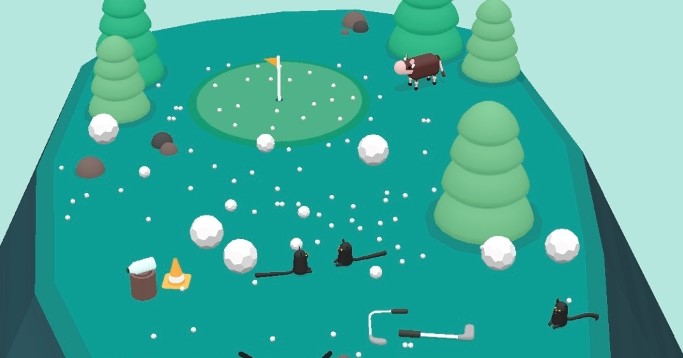The 50 Best Mobile Games of the 2010s
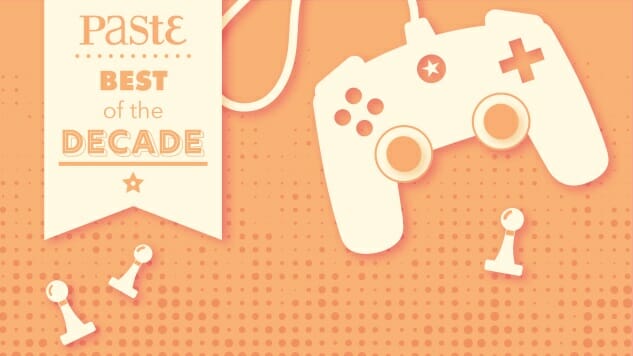
Mobile games weren’t born this decade, but this was still the mobile decade. The genre came into its own over the last ten years, both creatively and commercially, with the walls between mobile games and the traditional gaming market collapsing as time wore on. As console games became more and more beholden to digital distribution, and smartphones became both omnipresent and more powerful, it became harder to draw a distinction between the two. Sometimes that could result in creative dead ends—early this decade some designers spent too much time showing what mobile games could do, rather than exploring and building on what they should do. The best mobile games combine the pick-up-and-play ease of smartphones with elegant design and the kind of magnetic gameplay loop that keeps you enthralled far longer than you ever expected. Yes, too much of this market is underpinned with microtransactions and free-to-play shenanigans, but the recently launched Apple Arcade subscription service will hopefully minimize those exploitative tactics. We’re not here to point out what’s wrong with mobile games, though, but to highlight the games that made this decade the artistic and commercial boom period that it was for mobile games. Here are Paste’s picks for the best mobile games of the 2010s.
50. ELOH
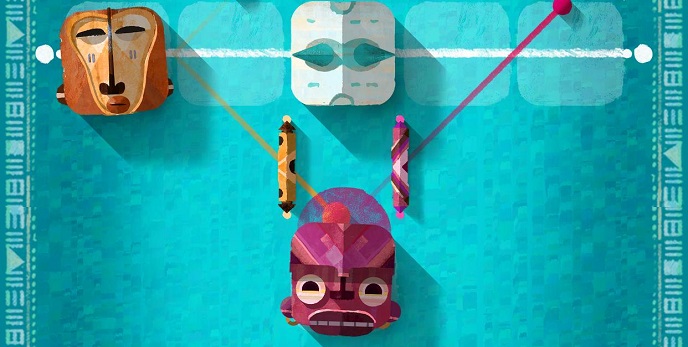
ELOH’s another gorgeous puzzle game perfectly calibrated for touchscreens. The goal is to shift blocks into the right position to bounce balls towards the target. Each ball makes a sound when it hits a block, creating a steady rhythm once everything’s in the right place. It has everything I’m looking for in a mobile game: a simple concept that makes smart use of the touchscreen, action that grows increasingly more complicated, and charming art and music. And on that last point, ELOH’s painted artwork makes it one of the most beautiful games I’ve seen in years.—Garrett Martin
49. 10000000
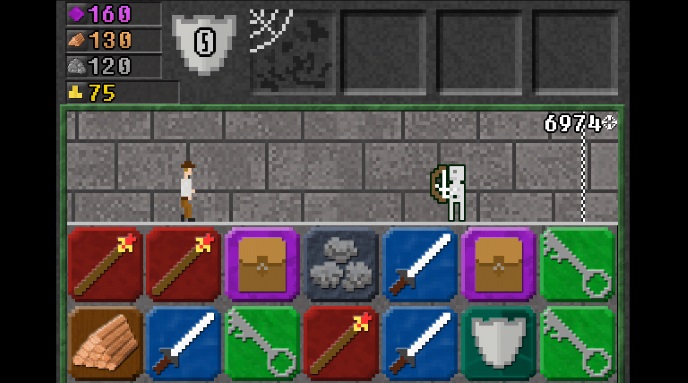
At this point, match-3 games are like zombie games: There’d better be a damned good hook if you want me to pay attention. Fortunately, the strange hybrid 10000000 has several. A fusion of the match-3, RPG and endless runner genres, 10000000 employs a surprisingly effective combination of common mechanics to keep players coming back.—J.P. Grant
48. HQ Trivia
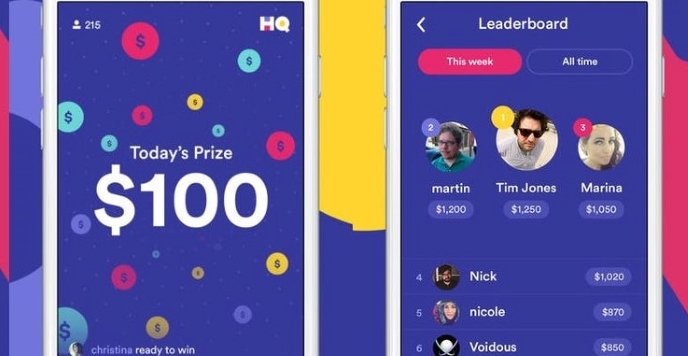
HQ Trivia might not seem much like any other game on this list, but this live interactive trivia game actually realizes one of the ideals of mobile game more successfully than almost anything else: it unites large swaths of humanity from across the nation in simultaneous play. Sure, the draw of maybe winning like two and a half bucks is a major reason why HQ has been successful, but it’s still a well-constructed trivia game, rarely resorting to trick questions or intentionally trying to confuse the player.—Garrett Martin
47. Dear Reader
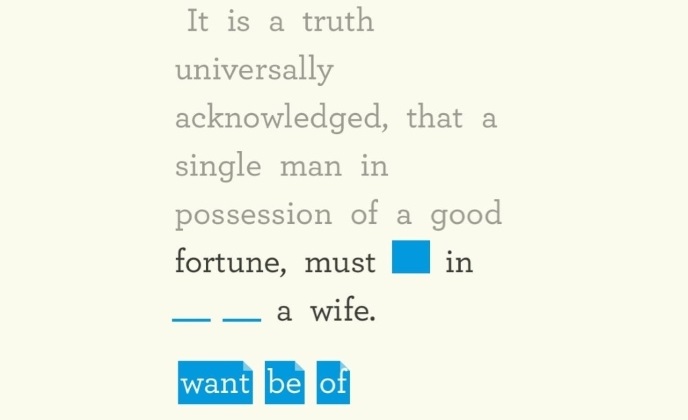
This Apple Arcade release turns public domain works from the literary canon into a suite of word games and puzzles, asking players to predict the next word in an Emily Dickinson poem, or find the misspelled words in a page from Heart of Darkness. It’s compulsively playable even if you aren’t an editor for a living, and will also expose you to some of the great works of Western literature.—Garrett Martin
46. Typeshift
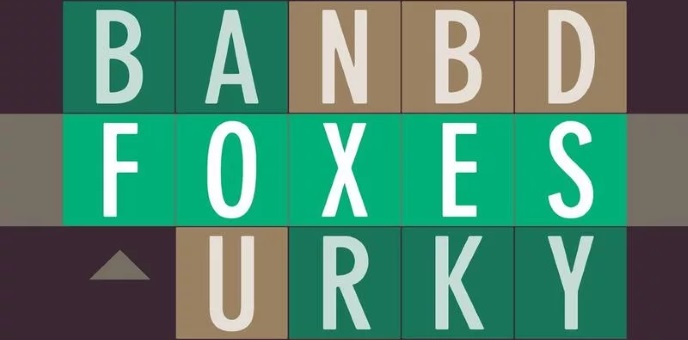
Another word game, Zach Gage’s Typeshift uses the Merriam-Webster dictionary to build a finger-controlled riff on Boggle. You’ll slide rows of letters up and down in order to make as many words as possible before the time runs out. It’s the kind of game that you’ll never feel guilty about pouring hours into, because you’ll probably be picking up new words the whole time.—Garrett Martin
45. Waking Mars

Thousands of videogames ask you to take life, but very few ask you to create it. Waking Mars is one of the rare creatures in the second camp. It’s also the rare mobile game that excels in all phases of its execution, elegantly integrating story, mechanics and aesthetics. As the story quietly unfolds—as you, well, wake Mars—you may find yourself more emotionally invested than you’d thought. That’s the thing about making life instead of taking it: eventually, you remember how to care.—J.P. Grant
44. Ziggurat
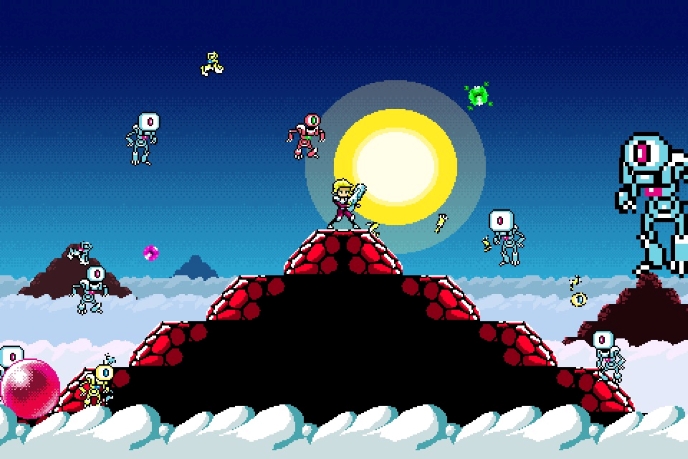
The one-finger shoot-‘em-up Ziggurat‘s unique greatness only becomes clear once you get sort of good at it. Like most good iOS games, it’s defined by an extremely focused shallowness, targeted entirely towards getting you to dive back in. Keeping the action set minimal while providing a wide variety of gameplay situations forces the player to get creative. Even in a short burst of play, it’s pretty easy to discover a permutation of the action that had previously gone unnoticed. Ziggurat has a great knack for creating itches and then permitting you to scratch them, if you can.—Joe Bernardi
43. Cinco Paus

Michael Brough’s game from late 2017 is once again built around chance and skill, with ever-changing levels and tools preventing you from relying on memorization and familiarity. If you’re familiar with Brough’s previous games 868-HACK and Imbroglio, you already sort of know what to expect. Brough’s been one of the most talented and consistent mobile game designers for years, and he continues his streak with Cinco Paus.—Garrett Martin
42. Flappy Bird
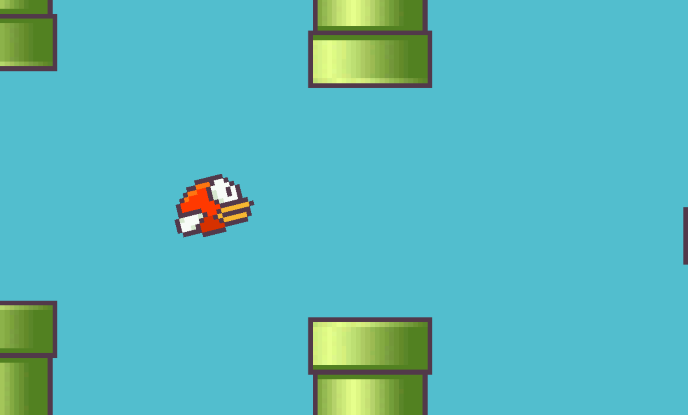
So it ripped off Super Mario art assets. So its massive success, which was weirdly delayed over a year after its release, might’ve been spawned through some digital shenanigans. Flappy Bird wouldn’t have become the short-lived smash that it was if it wasn’t doing something right at its core, and even though its difficulty could be capricious and unforgiving, it was still capable of sinking its hooks deep into the player’s brain and spurring them on to one more try, again and again and again.—Garrett Martin
41. SPL-T
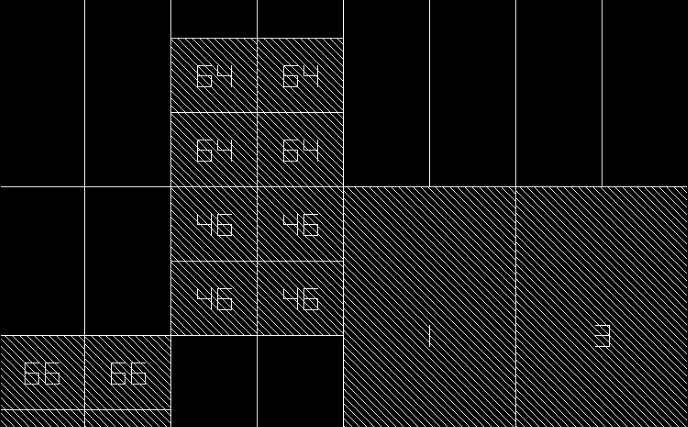
Simogo’s SPL-T is a minimalist revelation of a puzzle game. It’s a bizarre combination of Super Puzzle Fighter—SPL-T is a falling-block game of sorts, one in which some puzzle pieces have countdown-timers so that they eventually ‘zero out’ and vanish—crossed with that grade-school game where you try to see if you can fold a sheet of paper in half more than eight times. It’s hard to describe, admittedly, because there’s absolutely nothing else like it. It’s also tough to get the hang of at first, just because it totally requires the player to think in such different ways spatially… but once you ‘get’ it, you’ll be hooked.—Jenn Frank
40. Dandara

Long Hat House’s first game might play fast and loose with history—its hero, Dandara, is a real-life figure from Brazilian history—but its Metroid-style design and unique approach to motion make it compulsively playable. It’s part myth, part dream, all wrapped up in an occasionally psychedelic sci-fi action game heavily indebted to the aesthetics of the ‘80s and early ‘90s, and one of the best new games of the last few years.—Garrett Martin
39. Card of Darkness
Zach Gage and Adventure Time’s Pendleton Ward teamed up for this surreal RPG-styled card game, which is one of the most visually arresting games in recent memory. It’s another game where you have to fight your way through the floors of multi-story dungeons, but instead of pinball it’s a card game built on a 5 by 5 grid. Each square has a deck of cards on it, with only the top cards on the bottom row being face up at first. As you get to the bottom of one square’s deck, the top cards on the decks on adjacent squares will be flipped over. There are five main types of cards: weapons, gold, spells, health potions, and, most commonly, enemies. The monsters all have different skills, which sometimes play off of each other to make them even deadlier. The goal is to make it from the bottom of the grid to whichever square on the top row has the exit (it changes randomly every time you play). Weapons work on an even-odd system—every enemy card has a number on it representing its strength, and weapons have a corresponding number. If the weapon’s number is higher than the enemy’s, it’ll kill them without you taking any damage; if the weapon’s number is lower, you’ll kill the enemy and remove their card from play but the difference in numbers will be inflicted upon your character as damage. If you use a weapon card with an even number on an enemy with an odd number (or vice versa), you’ll still kill the enemy, but it’ll permanently break your weapon. You don’t have to pick up every card on the grid, but once you start pulling cards from a deck you have to turn over every card in that deck in order to exit the floor. This might sound confusing, and, frankly, it is the first few times you play, but once you get everything down you’ll be returning to this one whenever you have free time and staying up late every night playing just one more dungeon. The only real drawback with the game is its difficulty, which is heavily lucked-based; sometimes cards will be distributed fairly evenly, with swords and health potions popping up almost as often as monsters. Other times, though, you’ll find yourself pulling up nothing but bad guys at the top of every deck, leading to a quick and unavoidable death. That random distribution of cards is a major part of the game’s structure and appeal, but it also can make everything a little too frustrating at times. Still, with its whimsical artwork and novel approach to dungeon crawling, Card of Darkness is a game that’s hard to put down.—Garrett Martin
38. Grayout

Prepare to have your mind BLOWN. Billed by its creators as a “prequel” to 2013’s Blackbar—itself a dark, dystopian look at censorship and thought-policing—Grayout is both mechanically and thematically veeeery similar to its excellent predecessor. Without giving anything else away: It’s also better, richer, more intuitive. We’ve already said too much! Watch for it.—Jenn Frank
37. Beat Sneak Bandit
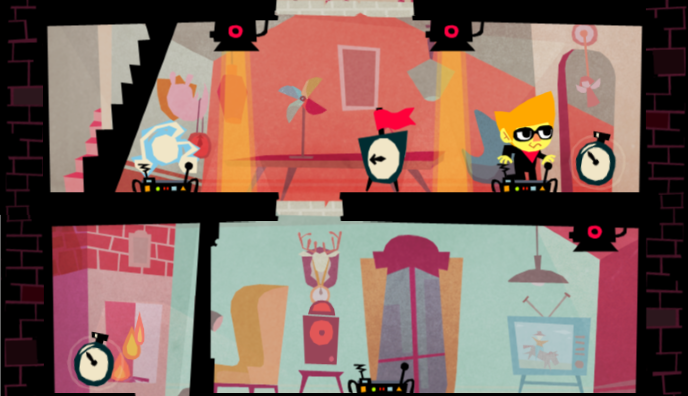
Rhythmically-challenged players beware: Beat Sneak Bandit‘s environmental puzzles bounce to the beat of the music and you can only move by tapping the screen correctly on beat. Beat Sneak Bandit is another refined achievement from Simogo and perhaps their most successful game yet. It’s intelligently designed and it works marvelously with the iOS interface. Most importantly, though, Beat Sneak Bandit has cured me of my habit of cringing at the sound of the phrase “rhythmic puzzler,” which is saying a lot.—Luke Larsen
36. Hitman Go

Hitman Go transposes Hitman to the context of a board game, and in doing so makes every aspect it touches smarter. Guns and weapons are no longer tools of reckless aggression, but board tactics for puzzle solving and path opening, used only in careful consideration of cutting through the ranks of the other player’s men. People have always been pieces, and Hitman has always been about manipulating them to accomplish a grisly deed. Go focuses more on the former than the latter, to the effect of not burying itself in needless pulp.—Matt Akers
35. Donut County
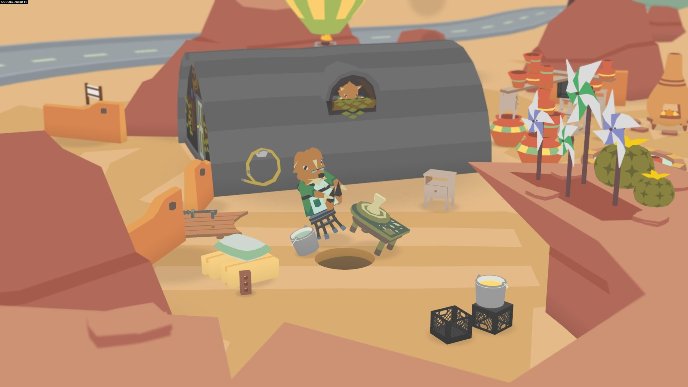
Donut County is entirely about holes and the destruction they can wreak upon a southwestern community when deployed with malice by a clan of scheming raccoons. If you’ve ever wanted to swallow up a pastel desert town full of blocky, adorable animals with sass and quirks aplenty, Donut County is the game for you. Other than the art style and character designs, the best thing about Donut County is the writing. It’s snappy and succinct, quickly establishing the unique personalities of a dozen or so characters, and legitimately funny without trying too hard or being obviously impressed by itself. As cute and surprising as the levels are, I found myself sometimes rushing through them in order to get back underground for the next bit of dialogue and the next character introduction. Like donuts themselves, Donut County will give you a quick, buzzy high, and taste great as you’re chewing on it, but isn’t all that filling.—Garrett Martin
34. Alphabear
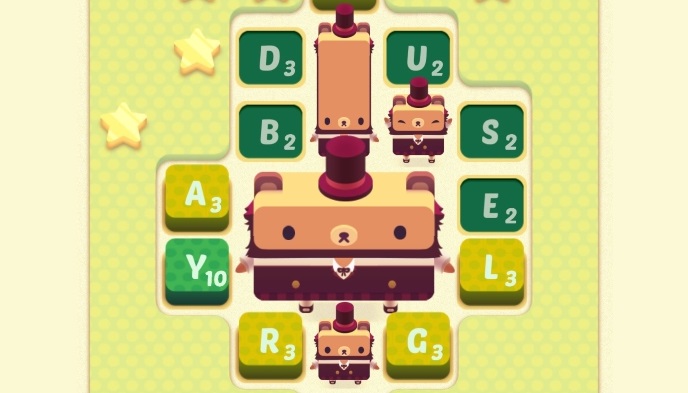
By all outward appearances a gentle spell-it-out word game in the mold of Bookworm, twee Alphabear bares its teeth early on. This is not an easy game, and its steep challenge-curve may frustrate some players. Some of the game’s more obtuse free-to-play gimmickry (‘hibernating’ bears? It’s clever, but man is it obnoxious) also dampen the otherwise-exquisite joy of playing. Still, it’s easy to get hooked, and the game’s cheery attitude and reassuring pastels go a long way in maintaining players’ goodwill. Alphabear’s fresh new take on “tiled word games” also forgives a lot of minor sins. It’s a new classic, for sure.—Jenn Frank
33. Prune
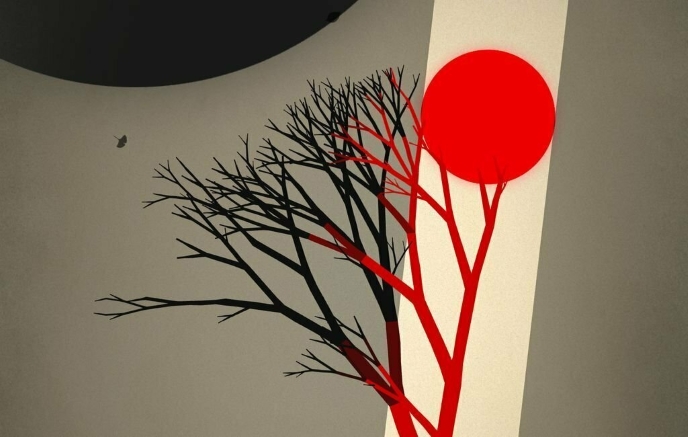
Prune is unabashedly an ‘art’ game, but it has zero pretensions: At its core, it’s a gorgeous, solid puzzle game. In it, you shear a lone tree’s branches (by swiping at the touch screen), carving away at the tree so that its limbs will grow around numerous obstacles and curl toward the sunlight. Apparently, the game itself was inspired by the practice of trimming bonsai, which might make Prune sound like a slow, contemplative, perhaps even arduous game experience. It isn’t. Because the tree grows so quickly, Prune often tends more toward an ‘action’ pace: You can usually brute-force your way to level’s end by beating back vines as fast as you can—which is to say, there isn’t a ‘right’ way to play Prune. It’s graceful, sophisticated, and wholly gratifying to play.—Jenn Frank
32. Super Mario Run
Super Mario Run arrived just in time for Christmas, releasing on Dec. 15 to rave review. While the game doesn’t do anything particularly new or interesting, it’s a stellar Mario title-and that’s more than enough. Besides: who can get enough of the plumber and his obsession with mashing Goombas?
Apparently, not us. Run beat Pokemon Go in day-one downloads.
Super Mario Run has all the hallmarks of Nintendo’s quality craftsmanship, and feels just as good when you’re entrenched in the throes of a difficult level. Every stage you complete feels like a triumph, and there’s very little bad to say about the game. Mobile gaming might be growing at a rapid pace, but there’s still a lot of vaporware out there-that’s why this new Mario adventure feels so right-it’s a true diamond in the rough.—Jacob Saylor
31. Infinity Blade II
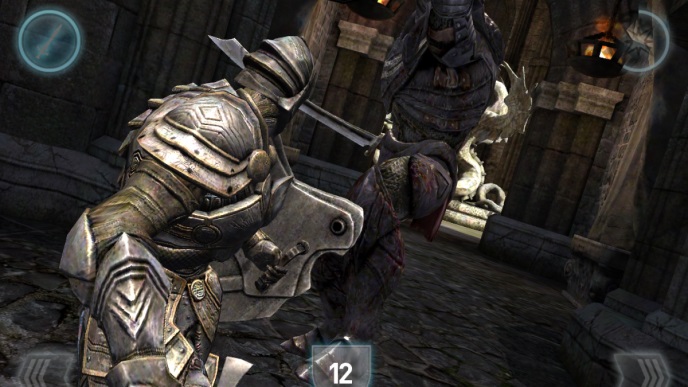
Infinity Blade II doesn’t fundamentally alter the formula that made its predecessor so successful, but it does add some welcome refinements like new weapon sets, an expanded story, and varied enemies. Its stunning visuals and responsive controls make it one of the best-looking and best-playing games on iOS, even if its repetitive structure isn’t entirely compelling over the long haul. In a franchise based on iterative gameplay, this sequel is an interesting study in iterative design.—J. P. Grant
30. A Dark Room
![]()
This text-only experimental RPG reminds you that words can be more powerful than any high-tech graphics or fast-paced play. Part interactive fiction, part strategy, and entirely unlike other games, or even what you might expect, A Dark Room is a mystery worth getting lost in.—Garrett Martin
29. 868-HACK
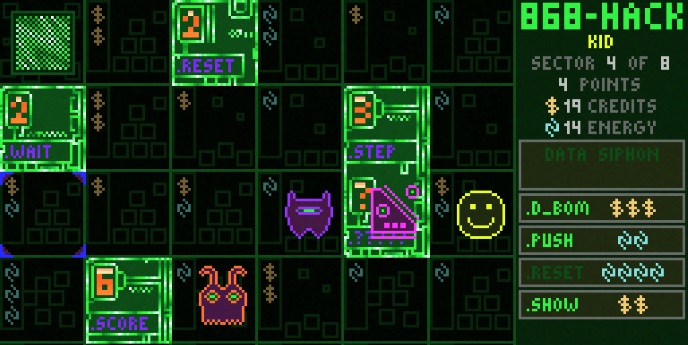
868-HACK is a turn based trainwreck—a meticulously ordered, predictably random and nearly always solvable trainwreck of exploding and overwhelming complexity. On its own, each individual element of 868-HACK is deceptively simple. When everything is combined, though, playing 868-HACK is like slowly managing every single particle flying about in a tornado, one turn at a time.—Aevee Bee
28. Clash Royale
Clash Royale may fall into a sector of videogames that has earned the disdain of gamers everywhere, thanks to aggressive monetization and tacky advertising, but hey, at least it survived without resorting to Kate Upton. And really, the hate towards this fun, little game is totally unwarranted.
Clash Royale pits players against one another in one-on-one duels, where strategy is key and simple mistakes can cost you the game. It’s one of the few titles I’ve played that pulls the beautiful hat trick of allowing easy entry for new players, while at the same time giving veterans a challenge.
The game is certainly pay-to-win in some aspects, but as someone who has made it to the rank of “Legendary,” it’s still possible to succeed in the game without ever spending a dime on it.—Jacob Saylor
27. Eliss Infinity

Playing Eliss Infinity feels like juggling. While you’ve got one ball in the air, you need to be thinking about the one you are catching, as well as the new ball that is about to get thrown into the routine. In Eliss Infinity, you’re tasked with the mission of combining planets of the same colors that pop up and “scoring” them in same-colored portals, all while keeping them from touching other planets of different colors. It’s a simple idea, but things get hairy really fast—especially in the high score Infinity mode. The Infinity mode really is the big new thing here, and the classic Eliss gameplay absolutely shines in this new mode. Not since Super Hexagon have you had so much fun while being so utterly stressed out.—Matt Akers
26. Hundreds

Hundreds is about the distance between objects. It’s about making circles grow as much as they can without impeding the progress of others. It’s about coexisting peacefully in a cramped, indifferent world that we have minimal control over. Mostly, though, Hundreds is about touching.—Garrett Martin
25. Mini Metro
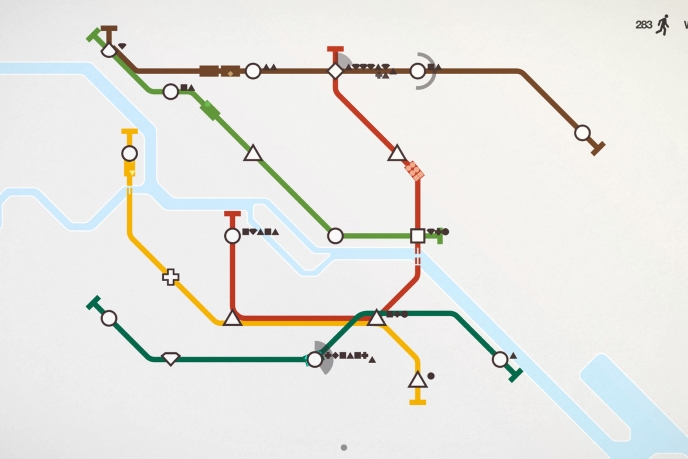
Mini Metro first debuted as a prototype browser game in 2014. Since then, it’s seen a release on mobile platforms, and the republish on smartphone devices has given the game new life. If you’re not familiar with Mini Metro, it’s essentially Rollercoaster Tycoon for subways, albeit far less complicated.
While that might not sound exciting, you’ve got to give it a try. Mini Metro is Zen, tranquil and addicting. It features a minimalist design that’s easy to understand, and you can be up-and-running within minutes of downloading. Very rare is the game that feels better on mobile than it does on PC, but Mini Metro fits the bill and pays a very fine tip to boot. Apple is offering the game for $0.99 via their App Store for a limited time-jump in while the getting’s good.—Jacob Saylor
24. Device 6

Device 6 has good taste. That’s evident from the start, with its Saul Bass-style intro and an aesthetic cribbed from cult 60s British shows like The Prisoner and The Avengers. It’s a swinging slice of interactive fiction that uses the tablet platform in clever ways, and it’s also classy enough to respect our patience and intelligence. You should play it, which means you should also read it, which means you should let it squat in your iCloud until computers turn to dust. Go.—GM
23. Alto’s Odyssey

Team Alto’s series of mobile games somehow turns downhill skiing into adventures through some of the most beautiful environments seen on a phone. It takes one of the hoariest mobile genres—the endless runner—and reinvigorates it not with gimmicks or microtransaction-heavy progression, but through sheer artistry. With a rich color palette, detailed backgrounds and superlative sound design, Alto’s Odyssey reawakens the possibilities that made mobile games so exciting a decade ago.—Garrett Martin
22. Jetpack Joyride
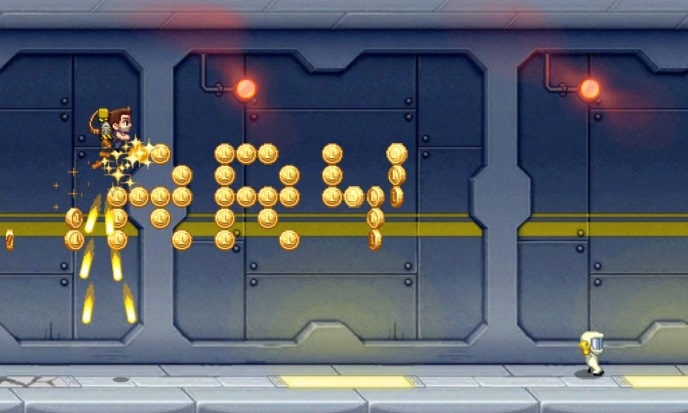
Videogames used to exist solely to suck up every quarter of our baby-sitting and paper route money. They offered short bursts of play with a goal no greater than making the high score board. Mobile games often share the same sensibility today, and Jetpack Joyride fulfills its end of that bargain better than any other game in 2011. No game stunned me more with “just one more time” paralysis than this infectious one-finger pursuit. No matter how far I fly with that jetpack (or dirtbike, or mechanical dragon) it will never be far enough.—Garrett Martin
21. 80 Days

Not only is 80 Days a near-perfect travel game, but it’s also a near-perfect game about traveling. Think Jules Verne meets a visual novel meets Oregon Trail and that should put you somewhere in the right neighborhood. On top of being beautifully illustrated this is also easily one of the most well-written games available on the App Store. The downside? If reading while you’re in a car (bus, plane, train…) often makes you nauseous, 80 Days should be the absolute last thing you reach for.—Janine Hawkins
20. Lara Croft GO
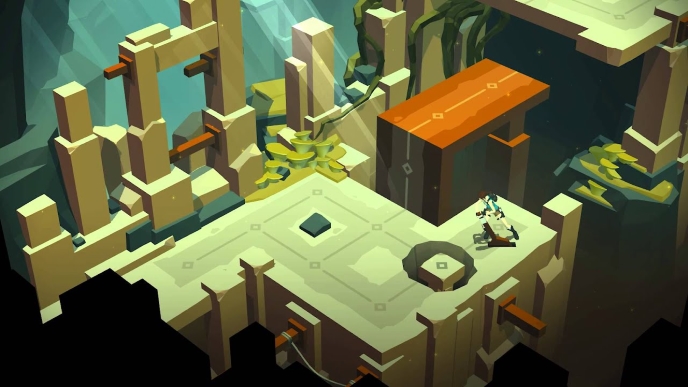
Hitman GO was a crowd-pleaser, and its successor, Lara Croft GO, really is every bit as good as they say it is. It’s prettier and more action-packed than Hitman—in other words, it’s better in almost every regard—all while refining the turn-based puzzle/action design template that made Hitman GO so successful. Mimicking Agent 47’s ‘stealth’ sequences, Lara now has to sneak up on snakes to shoot them—okay—but Lara’s world is so much less static than Hitman GO’s was. With Lara running and jumping and clambering up cliffs with such vigor and life, you might forget that this puzzle game is entirely turn-based. It’s all quite a feat, especially given that, on a mobile phone, Lara is a centimeter tall.—Jenn Frank
19. Grindstone
Grindstone borrows RPG elements and a few roguelike concepts (although you don’t really lose anything when you die, thankfully) and injects them into a color-matching puzzle game; your character has to slice and dice his way through a grid covered in enemies of different colors, but can only chain together kills with creatures of the same color. If you can kill 10 or more enemies of the same color in a single chain, a special gem will appear on screen, which will let you chain kills from your current color to one other color, opening up the possibility of massive chains that can reshape the entire board in a single move. It has a simple set of rules that it explores in exhaustive detail across 150 different stages, steadily forcing you to rethink your approach as new enemies and new obstacles are regularly introduced into the mix. I can’t think of anything in any other game I’ve played this year as satisfying as running through a massive chain in Grindstone, slashing through 30 or more enemies in a single move while also knocking off some of the stronger special monsters or cracking open a treasure chest along the way. Grindstone is a thoroughly confident game that understands exactly what a certain type of player is looking for from mobile experiences, and then goes above and beyond all expectations to make that a reality.Garrett Martin
18. Letterpress
Word game Letterpress is a shining example of minimalist game design that is incredibly easy to pick up, but deeply layered in strategy. Players take turns choosing from the group of 25 randomly-generated letters to create words. When you make a word, the tiles you use turn light blue, adding points to your score. As players claim the board for their own, deeper levels of strategy arise. Resources become increasingly scarce and competitors are forced to become more and more creative in their word-making. It’s as different from Scrabble or any word-puzzle game as could be, while still keeping the knowledge of a large vocabulary at the center of the game’s required skillset.—Luke Larsen
17. What the Golf
What the Golf finally makes golf tolerable by turning it into the most surreal and least predictable sport of all time. It regularly obliterates whatever expectations you might have from decades of legitimate golf videogames, preserving nothing from the real sport except for the basic concept of getting an object to a hole with a flag in it and a heavily abstracted approach to the traditional golf course layout. Even those aren’t omnipresent, though, as many of its dozens of holes eschew anything even remotely connected to golf. I don’t want to give too much away, as surprise is What the Golf’s greatest gift, but here are just two examples of what you can expect. Imagine what looks like a typical golf game, with an on-screen character holding a club at the tee, staring down a fairway that leads to the green. You touch the screen and pull back in order to control the power and direction of your swing. When you let go, instead of the ball soaring towards the hole, the character itself is flung deep into the fairway—or even the arrow that appears on-screen to represent the angle and strength of your swing. What the Golf pulls both of those pranks very early on, and then somehow consistently comes up with new, unexpected jokes throughout its surprisingly long run time. With bite-sized levels that each have three increasingly difficult objectives, and dozens of them in total to play through, this is yet another mobile game perfectly suited for either short, pick-up-and-play sessions, or long marathons. There are also entire clusters of holes that cheekily reference games like Super Mario, Super Meat Boy, Superhot, and even some games that don’t have the word “super” in their title. What the Golf is the rare game that tries to be funny and actually pulls it off, hilariously defying expectations with puckish glee.Garrett Martin
16. Hearthstone
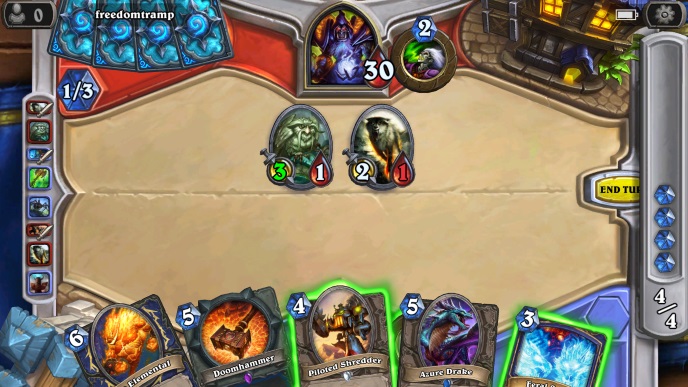
Hearthstone dominated the first half of my summer in 2014. It sent me bounding, with a moronic smile on my face, into a labyrinth fraught with meta-games, saying the phrase “boulderfist ogre” in public, and even, briefly, podcasts. After that initial introductory period, I tried to approach Hearthstone the way I’ve approached activities like playing music, programming, or cooking: How much time did I want to invest in it? How good did I feel like I needed to be? How much of my life did I feel comfortable dedicating to it? It seemed like the sky was the limit. Whatever amount of time, money, or mental energy I felt like throwing at Hearthstone, Hearthstone could comfortably accommodate it without the guarantee of any ROI.—Joe Bernardi
15. Desert Golfing
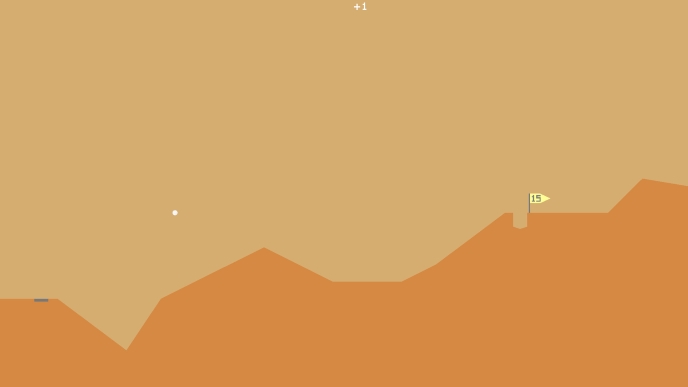
I can go on about how Desert Golfing is a knowing deconstruction of the mobile game, how its series of simple and repetitive swipes boils the entire form down to its most basic parts, with barely any embellishment at all. I mean it looks like an Atari game, just a two-tone background with a white dot for a ball, blocky white numbers and a small yellow flag. I could talk about how it locks us into our failures, preventing us from restarting and replaying levels. About how it pretty much never ends. But in that time I could add like another thirty strokes to my total on hole 2000 and something, so I’ll just go do that instead.—Garrett Martin
14. Superbrothers: Sword and Sworcery EP
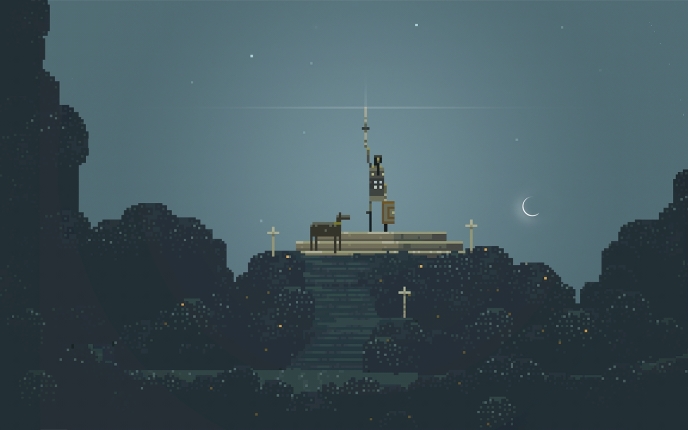
Sword & Sworcery’s most awe-inspiring moments take place when it allows us to forget about ourselves, our world, our iPad and our Twitter followers for long enough to take in the wonders that it presents. Danger feels imminent and foreboding, and the animal and plant life seem organic and ethereal. While performing the “Songs of Sworcery” our fingers seem to trigger magical wonders and beautiful music. The story itself is beautiful in its simplicity, and it is so effective because it lingers on implications rather than literalities.—Richard Clark
13. Kim Kardashian: Hollywood
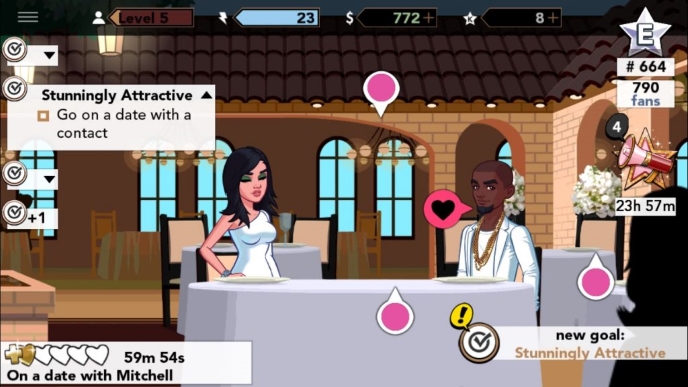
The greatest asset for videogames as fiction, one that it holds over other forms of media, is the immediacy with which you can identify with people and experiences that are not your own. While books and movies allow you to observe, videogames really allow you to be someone else. With each little tap on my tablet’s screen, I feel like I am closer to experiencing Mrs. Kardashian West’s world, though with less pressure, and the ability to turn it off. If there’s any reason or purpose for this game other than to put more money in Kimberly Noel Kardashian West’s pocket, it’s this: You want to know why Kim Kardashian is famous? It’s because she works.—Gita Jackson
12. Her Story
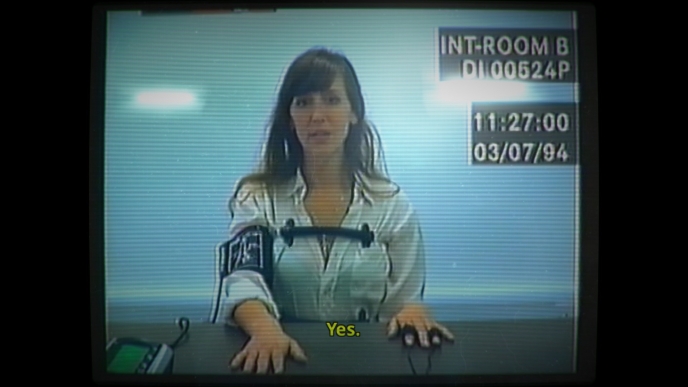
We realize Her Story has amassed its share of the glory, but it’s all well warranted. Simultaneously haunting and a little bit cheesy (this is an FMV game, after all), Her Story quickly goes from simple murder mystery to a surreal fairytale-gone-wrong.
It would’ve been so easy for designer Sam Barlow’s game to tonally miss the mark entirely; much of the game’s success or failure ultimately hinges on Viva Seifert’s performance, thank goodness, which is committed, subtle when necessary, and full of depth. At the same time, she sells her character like murderesses are going out of style; her performance-within-a-performance finally seals the deal.
If the mark of a successful game is maintaining a set narrative course even as it bolsters the illusion of players’ agency, well, that’s exactly the knack of Her Story. Mechanically, this FMV game is very simple—it’s almost perilously linear, if you look too close at it—but it encourages player exploration and experimentation like nothing else in years. And although the game relies on the player typing cues into a search bar, Her Story is nonetheless an unexpectedly good fit for tablet devices.
But back to Viva Seifert. If the pictures “got too small” for Norma Desmond, then the iPad’s frame is just a bit too restrictive for Seifert. Her scrumptious performance finds that exacting line between drama and melodrama; almost any other actor would’ve spoiled the entire game.—Jenn Frank
11. Reigns
Reigns is a particularly innovative title, utilizing the right-swipe, left-swipe tool first made popular by dating service Tinder. However, if you’re like me, your decision to swipe one way or the other is much more effective inside this videogame than it is in the real world.
At its core, Reigns is almost unnervingly simple. You are a king, and it’s up to you to employ or deactivate various decrees. However, after you’ve spent some time with the game, you begin to understand that there’s a method to all the madness: you have to please members of the clergy, the people, and your fellow royals while maintaining your seat of power; this can prove to be quite tricky, to say the least.
The game is easy to pick up and has proven itself to be one of the best gateway videogames published recently. It’s hard to hate this beautiful creation.—Jacob Saylor
10. Holedown
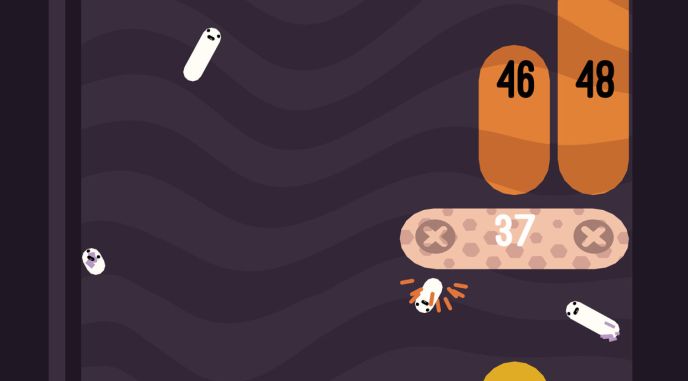
Holedown felt instantly timeless, like a forgotten early arcade hit dragged onto 21st century smartphones. It takes a simple idea—you shoot out balls to break blocks before they reach the top of the screen, caroming the balls around the screen like it’s a pool table—and maximizes it for the mobile platform, with easy drag-and-go controls and a ruleset that makes it much more complicated than just busting some bricks. Somehow Holedown makes one of the oldest ideas in videogames—bouncing balls off of blocks—feel fresh and original.—Garrett Martin
9. Year Walk
You’ll get lost really quickly in Simogo’s sinister Year Walk—which makes it that much creepier when you stumble across one of the game’s many eerie puzzles and frightening creatures. I can’t remember the last time a game gave me the intense feeling of being completely lost and alone the way Year Walk does.—Luke Larsen
8. Super Hexagon

In Super Hexagon, you control a small triangle trying to survive in a world full of shapes, sounds and colors that would love to engulf you. Rotating left and right around a hexagon is the only action possible, as patterns and obstacles moving in sporadic motions come hurtling toward you. The first time you play you’ll probably make it through 10 games in 30 seconds. The game is that hard and sessions are that short. One thing is for sure, though: That 30 seconds will quickly turn into hours if you’re not careful.—Luke Larsen
7. Downwell

Downwell is a crunchy, rapid-fire “Spelunky-like” (are we at that point already? Are we prepared to start describing games as “Spelunky-likes”?) but, instead of side-scrolling, Downwell occurs vertically, in a procedurally-generated dungeon that the player falls down through. The player’s sprite will often fall right past powerups, enemies, and treasure rooms, making the game wonderfully frenetic torture. Fortunately, the player is equipped with a pair of goddamn gun-boots—making you, the player, feel incredibly powerful for every second you’re not staring in shock at the Game Over screen. —Jenn Frank
6. Ridiculous Fishing
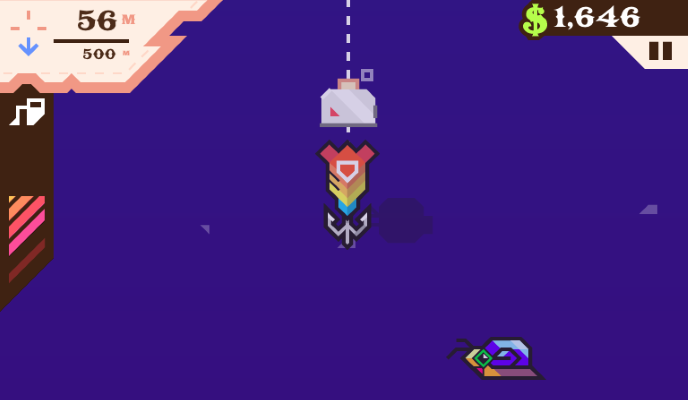
Ridiculous Fishing is a story about a man’s attempt at becoming one with nature in an attempt to settle a personal vendetta against the ocean. It is a story about a world that exchanges fish that have been liquified by gunfire for surprisingly large amounts of cash. It is a story about birds making fun of each other on the internet. Ultimately, and in a pretty roundabout way, it is a story about coming to terms with the infinite.—Joe Bernardi
5. Old Man’s Journey
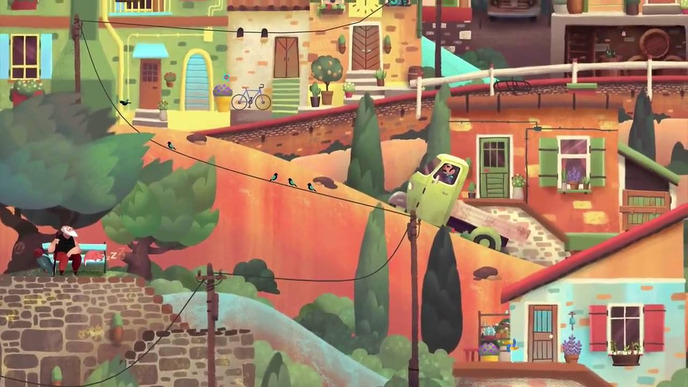
Old Man’s Journey is a small, quiet game that you can tell was a work of passion. Sometimes the best way to get someone to listen to you is to whisper. In a just world, this spare kaleidoscope of memories and manipulated hillsides will garner as much attention as bigger games beset with earth-shaking explosions. As we all learn in time, it’s often the smaller chance encounters that make the most impact on us. Especially when we look back.—Jon Irwin
4. Monument Valley
Monument Valley is a brief, wondrous piece of art about structure and perspective. Technically it’s a puzzle game, available now for iOS and coming soon to Android, but its puzzles serve less as brain-teasers than as a vehicle to explore Ustwo’s beautifully crafted environments. The game’s artwork, which unfolds across ten succinct chapters, borrows heavily from the works of M.C. Escher, the Dutch graphic artist known for his “impossible constructions”—grand rooms filled with infinite staircases, balconies simultaneously above and below one another, spires at once in the foreground and background. Monument Valley isn’t entirely about optical illusion, but its pastel stages consistently channel this brand of imagination.—Matt Akers
3. Threes

In 2013, in the Atlantic, Ian Bogost described Hundreds as “the haute couture” of videogames, important more as a “design object” than a “consumable media experience.” That could almost describe Threes. Its simple color palette—a soft grey rectangle on a white background, covered with tiles that are either white with small splashes of orange, or a muted blue and red—is almost as stark as Hundreds’. Threes is a more whimsical game, though—tiles have small faces and sometimes speak, saying hello to one another when they combine or muttering “bored” when the player takes too long between moves. Jimmy Hinson’s music has a strong Jon Brion influence, evoking the mannered but not quite icy early films of Paul Thomas Anderson. If Hundreds was a European art film, Threes would be its quirky American cousin. It’s worth getting obsessed over.—Garrett Martin
2. Pokémon GO

Pokémon GO deserves tremendous praise for finally achieving what we’d all been secretly longing for whether we realized it or not: the ability to catch Pokémon out in real life. The world has responded accordingly, quickly turning Pokémon GO into a wildly popular, and profitable, success. In the years since its release, the mobile title is still going strong and continues to add new features, from player vs. player battles to Pokémon transfers between Pokémon GO and Pokémon Let’s Go, the Switch remake of the first Pokémon games. For bringing together so many fans in real life, and getting me out of the house on a regular basis, Pokémon GO is one of the best mobile games ever made.—Holly Green
1. Florence

Florence knows what it means to be human. We love, we lose, we learn, and move on. This story follows a relationship from its first flickering to its final ember, and although that’s as sad as it sounds the misery isn’t the point. The message is that this is normal—this is life. Most relationships won’t last, and what’s important is what we learn during them and how that impacts the people that we’ll be if—or when—they do end. Florence captures this entire journey in elegant fashion, using the touchscreen to turn us into active participants in Florence’s life. It’s a modest game that’s made a deep impression, and proof that videogames don’t have to serve as a power fantasy or wish fulfillment to resonate with an audience.—Garrett Martin
